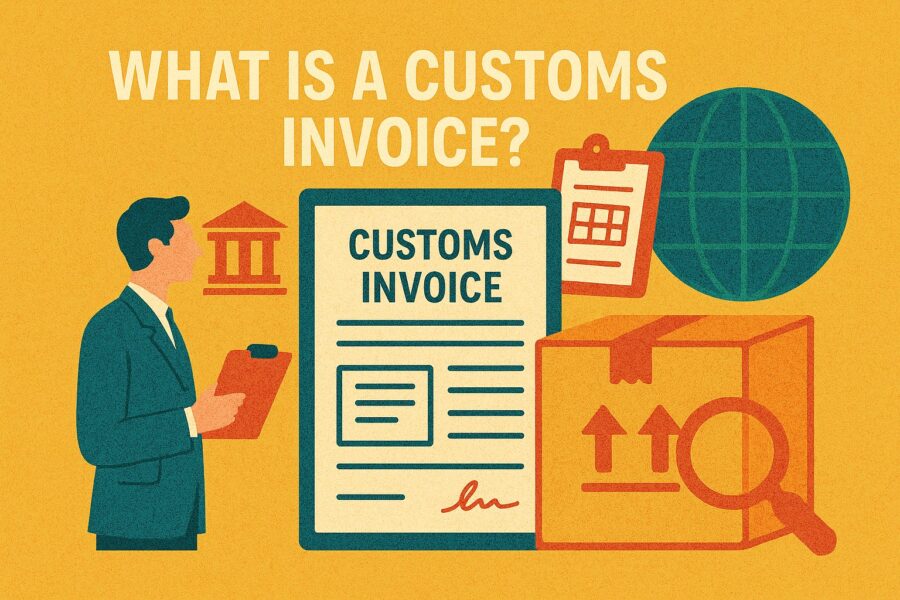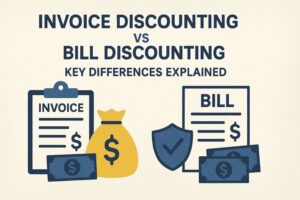What is a Customs Invoice, and When to Use One
- 4 Nov 25
- 9 mins

What is a Customs Invoice, and When to Use One
Key Takeaways
- It validates the transaction between exporter and importer and helps customs authorities determine applicable duties, taxes, and compliance with trade regulations.
- Sellers are required to submit it to destination-country customs for clearance, ensuring timely delivery and avoiding delays in processes like Input Tax Credit (ITC) claims.
- As per India’s Foreign Trade Policy (1992), the invoice must list exporter/importer details, shipment quantity, net weight, unit price, HS codes, country of origin, and a declaration of accuracy.
- Filling out all sections accurately, from company details to shipment descriptions and reference numbers, helps prevent compliance issues and trade delays.
- A customs invoice serves customs and taxation purposes, while a commercial invoice serves as a legal sales document for payment and accounting between buyer and seller.
Whenever a seller exports goods, they must comply with the customs regulations of the destination country. With the Indian export market projected to exceed $1 trillion in FY26, all GST-registered companies must strengthen their legal policies and distribution strategies to capitalise on this growth.
Ensuring that all stages of the export process are completed correctly can be complicated. It is strictly essential to maintain the correct set of shipping documents, including a customs invoice, to avoid unnecessary delays. Along with other essential paperwork like a Proforma Invoice or Commercial Invoice, this is a crucial piece of document that enables quick clearance of shipments.
In this blog, you will learn in detail about what is a customs invoice and confirm its applicability.
What is a Customs Invoice?

A customs invoice officially validates the international transaction of goods between an importer and an exporter. If you send goods to another country, they must be inspected by that country's customs authorities to determine the applicable duties and taxes.
The standard format of a customs invoice addresses the most pertinent queries of customs agencies and meets customs clearance requirements. Therefore, it enables international shipping providers for businesses to deliver goods to the intended destination more quickly.
When Should You Use a Customs Invoice?
When a supplier completes the customs invoice correctly, it ensures that the delivery is completed on time. Although incomplete or incorrect invoices do not always cause payment delays, GST procedures such as claiming ITC could be delayed by up to 90 days.
Consequently, sellers must use a customs invoice every time they make international shipping arrangements. This document needs to be handed over to the customs authorities of the destination country so that they can calculate the total Customs Duty, import tax, or other fees for taxes purposes.
What Information is Compulsory on a Customs Invoice?
According to the Foreign Trade Policy of 1992, customs invoices issued in India must include the following customs invoice requirements:
- Trade name and address of the shipping agency and consignee
- Brief description of the exported goods
- Quantity of goods to be delivered (Shipment Pieces)
- Net weight of the products
- Unit price
- Total price, including Freight and Insurance Charges
- Respective Harmonized System codes
- Invoice number
- Country of origin of the goods
Moreover, there is a declaration section at the end of a customs invoice, often referred to as a Customs Declaration, to confirm that all the above-stated information is correct to the best of the shipper’s knowledge.
How to Fill Out a Customs Invoice?
Fueled by 10-digit active IEC codes, Indian exports have already surpassed $800 billion in the 2024 calendar year. Therefore, regardless of the total invoice value or the type of goods you deal in, if you are involved in exports, merely knowing what is a customs invoice will not be sufficient.
As per clear directives from the Directorate General of Foreign Trade (DGFT) portal, you must implement the correct procedure for completing the customs invoice to avoid compliance discrepancies with trade regulations, import regulations, and export requirements. Here's how to do it:
Step 1: Add Your Company Details
You must include your company’s official trade name and address, along with the shipping firm’s details, at the top of the invoice. Following this, the relevant tax identification numbers and contact information should be provided. All these details should also be included for the intended recipient. Many delivery service providers and customs brokerage firms assist in preparing such commercial invoices to match compliance norms.
Step 2: Add Buyer’s Specifications
If the buyer is not the same as the recipient of the goods, their details must be provided separately on your customs invoice. Additionally, you can enter the buyer’s tax identification number once you have received the relevant details.
Step 3: Allocate a Unique Reference Number
A separate invoice number or reference ID has to be included with every shipment. Accordingly, the seller is required to mention it on the customs invoice. This element proves extremely useful when tracking your order or collecting any outstanding payment.
Step 4: Mention the Correct Dates
For smooth customs declaration and customs clearance requirements, you must include the date on which your company received the order. In addition, the shipping date must also be provided.
In a few instances, orders are placed well in advance, sometimes up to a year or several months beforehand. In such cases, it is good practice to specify the shipping and order receipt dates separately to avoid any confusion.
Step 5: Include Descriptions of Your Goods
Customs invoices must include detailed information about the items in the shipment. This includes the names of the individual products, their values, purposes, and the materials used to produce them. The latter information is necessary to determine whether the goods are heavy, toxic, fragile, and so forth.
Additionally, you can attach serial numbers to each of your shipped items, as this information can come in handy in the event of theft.
Step 6: Verify the Mentioned Details
It is essential to reconfirm the precision of all the details submitted. If you are satisfied with the content of your customs invoice, sign the form and present it to the rightful customs department for customs declaration.
Customs Invoice and Commercial Invoice Compared: Which One Do You Need?

| Aspect | Customs Invoice | Commercial Invoice |
| Purpose | Used primarily for customs declaration and to help customs authorities assess duties and taxes, Customs Duty, and other fees for taxes purposes. | Serves as a sales document between buyer and seller, indicating the agreed price and payment terms for goods or services. |
| Primary Audience | Customs officials in the importing country. | Buyer or importer of the goods. |
| Content Focus | Includes detailed shipment information such as country of origin, Harmonized System codes, Shipment Pieces, Freight and Insurance Charges, and customs invoice requirements. | Contains product descriptions, quantities, unit prices, total value, and payment instructions. |
| Legal Requirement | Mandatory for international shipping to comply with customs clearance requirements and import regulations. | Not always legally required, but essential for commercial transactions and accounting records. |
| Format | Structured to meet trade regulations and export requirements, with emphasis on customs declaration accuracy. | Flexible format; can vary depending on the provider for businesses or delivery service providers. |
| Use in Process | Attached to shipments for inspection by customs authorities to enable quick clearance. | Sent to the buyer as part of the sales and payment process. |
| Associated Costs | Helps determine import tax, duties and taxes, and compliance-related fees. | Relates to the product price and any commercial agreements between the buyer and seller. |
| Examples of Use | Exporting goods where customs need to verify the customs clearance requirements. | Local or international trade where proof of sale is needed for payment. |
💡For secured and smooth transactions, use the PICE App.
Where Do You Need to Attach the Customs Invoice?
As mentioned, customs invoices and, in some cases, commercial invoices, play a vital role in international shipping. Before handing a package over to a courier or shipping company, you must print and attach both the customs invoice and the shipping label to the parcel.
The ideal approach is to print three copies of the invoice, as customs officers might remove one copy during transit before the package is delivered further. It is also advisable to insert another copy of it in the package in case the external invoice becomes detached or damaged during shipping.
The customs invoice should be affixed to the outside of the parcel. This will assist customs authorities in inspecting the contents, verifying customs declaration information, and determining the value of the goods.
The most appropriate method of displaying the customs invoice on a package is to use a document pouch designed for shipping. A clear plastic wallet or envelope is also a good option. However, you must ensure that the paper does not cover any barcodes on the shipping label, as tape is used.
Conclusion
In this guide, you have developed a clear understanding of what is a customs invoice and its purpose. However, depending on the goods you are shipping and the chosen destination, additional fields may need to be included in your customs invoice or commercial invoice to meet customs clearance requirements.
For further guidance, you can consult taxation and commercial experts online, who can provide ready-made templates, ensure compliance with import regulations and trade regulations, and make your shipments smoother with the help of delivery service providers, customs brokerage firms, and provider for businesses solutions.
 By
By 















